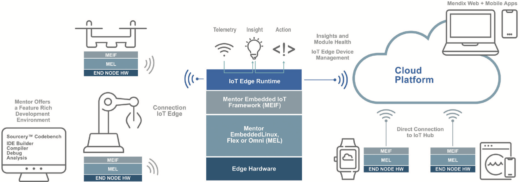Head in the clouds
It is common to hear folks talk about data being “in the cloud”, as if there were a place called The Cloud. Maybe they think that there is such a place, but, in reality, there are a variety of services that might be described this way. Broadly, the term refers to any remote data storage facility that is typically accessed via the Internet. I have been thinking about my own cloud service usage and the implications to embedded systems of cloud storage …
I realized that I use quite a wide variety of cloud services. Microsoft OneDrive is the place where I back up my photos. I use Adobe’s cloud service a little. As we have a house full of Apple devices, we inevitably use iCloud for some things. My contacts and email live at Google. I keep a lot of material in Evernote, which gets synched with their cloud service, which I seem to recall is provided by Amazon. I think that I have collected the set of all the major players. 🙂
It is increasingly common for embedded systems to utilize cloud storage and with the expansion of the IoT, this is set to increase. A popular set of services in this context is Microsoft Azure. Mentor Embedded have partnered with Microsoft to integrate Mentor Embedded Linux with Azure. There is a free white paper that details the technology. Here is an abstract:
With over 50 billion IoT products predicted to hit the market in the coming year, the challenge for IoT designers is how to gather data from massive numbers of diverse microcontrollers embedded within IoT products, then securely and efficiently aggregate and upload those data streams through gateways and finally out to cloud storage. This white paper explores how Mentor Embedded Linux (MEL) and Mentor Embedded IoT Framework (MEIF), coupled with Microsoft Azure, provides OEM developers a fast, proven, secure methodology for delivering embedded IoT products that achieve increased ROI while speeding time-to-market.
